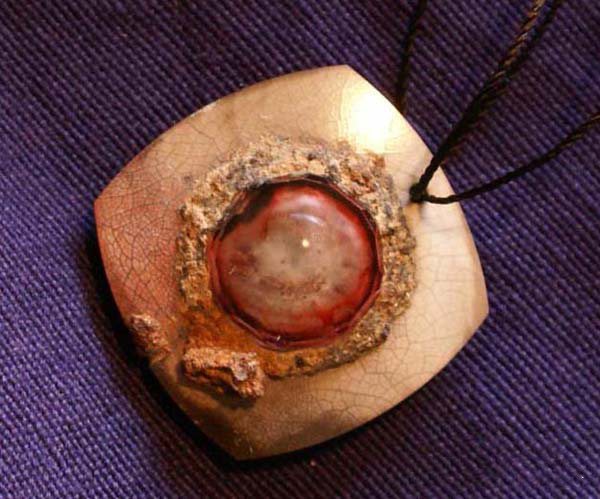 |
| Author: Amber D. Schamel |
The word "peridot" stems from the Arabic word "feridat" which means "gem." Most gems are formed in the earth's crust, however the diamond and the peridot are different. Peridot is formed in magma of the upper mantel of the earth. About 20-55 miles deep! Volcanoes did us the service of bringing them up to where we could find them. Some peridot gems also came to earth in meteorites, however this form is very rare and not likely to be sold in jewelry stores. (I tried to find one for my sister who is born in August, but they are thousands of dollars and usually sold out.)
The peridot has always been linked to light, in fact, the Ancient Egyptians believed it was the "gem of the sun." Perhaps that belief stemmed from the fact that it arrives in meteorites or lava. Some ancients believed that the gem could ward off evil spirits, or that the wearer was protected from the terrors of the night. Other cultures believed that peridot could dissolve enchantments. Medical uses have included placing the gem under the tongue of a person with fever, which was supposed to help lessen their thirst. Others believed the gem could cure asthma if used in powdered form.
 |
| Topazios Island, Egypt |
Similar to the emerald, the peridot was mined as early as 1500 BC and seems to have first been discovered in Egypt. Early records and legends tell us that peridot was mined in Ancient Egypt on an island called Topazios (now known as St. John's Island or Zabargad) in the Red Sea. Although, given the name of the island, they probably didn't realize what stone they had. According to the legend, the island was infested with snakes, which made mining dangerous and difficult, until a clever pharaoh found a way to drive all the serpents into the sea.
People throughout most of history confused the peridot with other stones, such as topaz and emerald. Some historians believe that Cleopatra's emerald collection consisted of peridot rather than genuine emerald. People in medieval times confused the peridot with the emerald as well. The 200-ct. gems in the shrine of the Three Holy Kings in the Cologne Cathedral in Germany was believed to be emeralds for centuries...turns out they are actually peridot.
 |
| Shrine of the Three Kings Arminia / CC BY-SA (http://creativecommons.org/licenses/by-sa/3.0/) |
The breastplate of the High Priest of Israel contained twelve stones, one to represent each tribe, and one of those gems is believed to be peridot.
Today, there are five main sources of this rare gem. The best specimens come from Burma. Arizona and New Mexico source much of the commercial grade peridot for the United States. China, Vietnam and Pakistan are also among the sources.
Between the peridot's beauty, unique formation, and rich history, it is a highly prized gem and one you can be proud of if you are born in the month of August.
Comment below if you were born in the month of August and you may be the lucky winner of a free ebook from me! (Winner will have their choice of my ebooks.)
*****
Two-time winner of the Christian Indie Award for Christian Historical Fiction, Amber Schamel writes riveting stories that bring HIStory to
life. She has a passion for history, books and her Savior. This combination
results in what her readers call "historical fiction at its finest".
Between enjoying life as a newlywed, and spinning stories out of soap bubbles,
Amber loves to connect with readers and hang out on Goodreads with other
bookish peoples. Find her on any of the
major social media sites. Amber is an
active member of American Christian Fiction Writers.
Visit her
online at www.AmberSchamel.com/ and download a FREE story by subscribing to her Newsletter!





